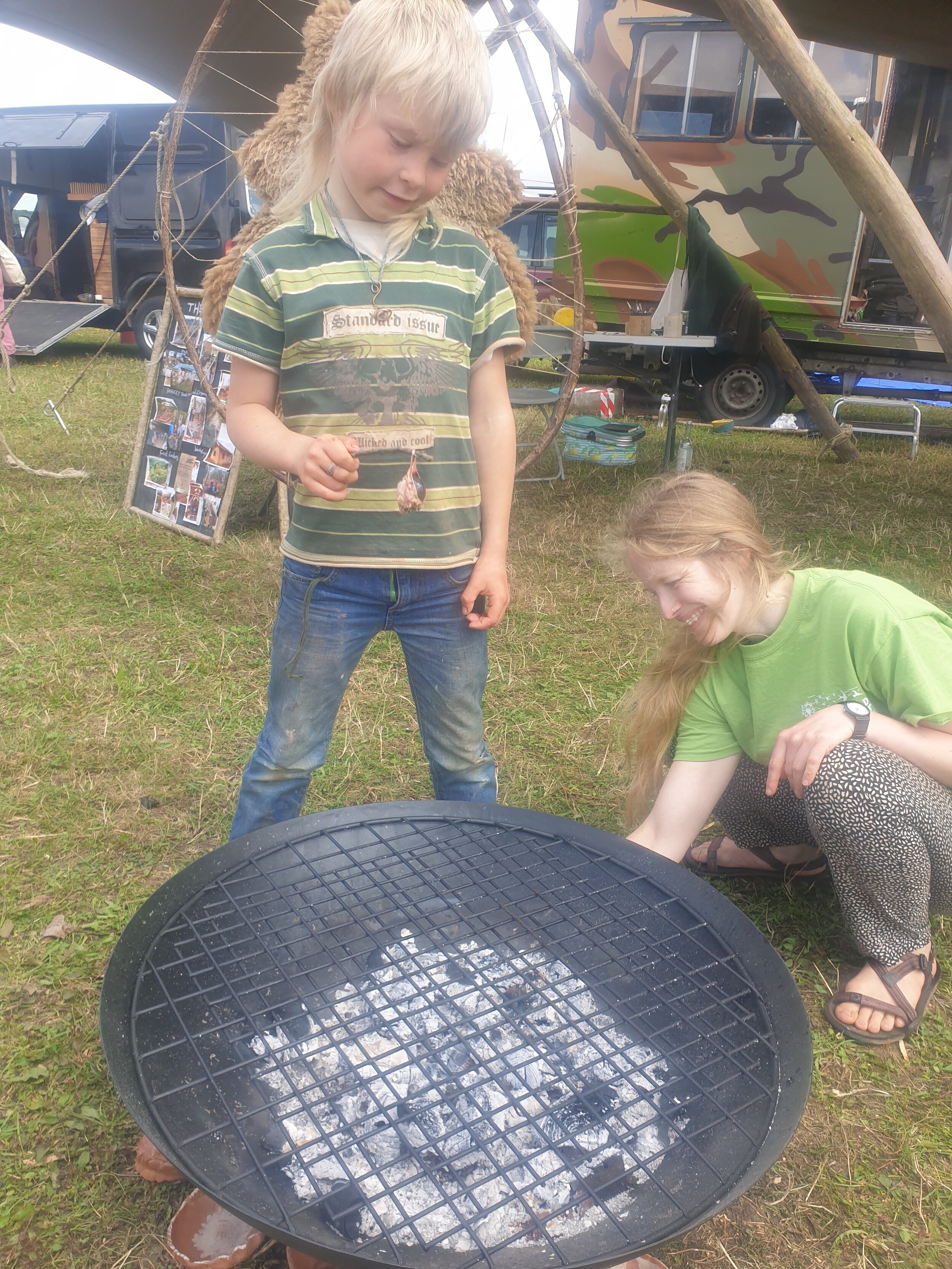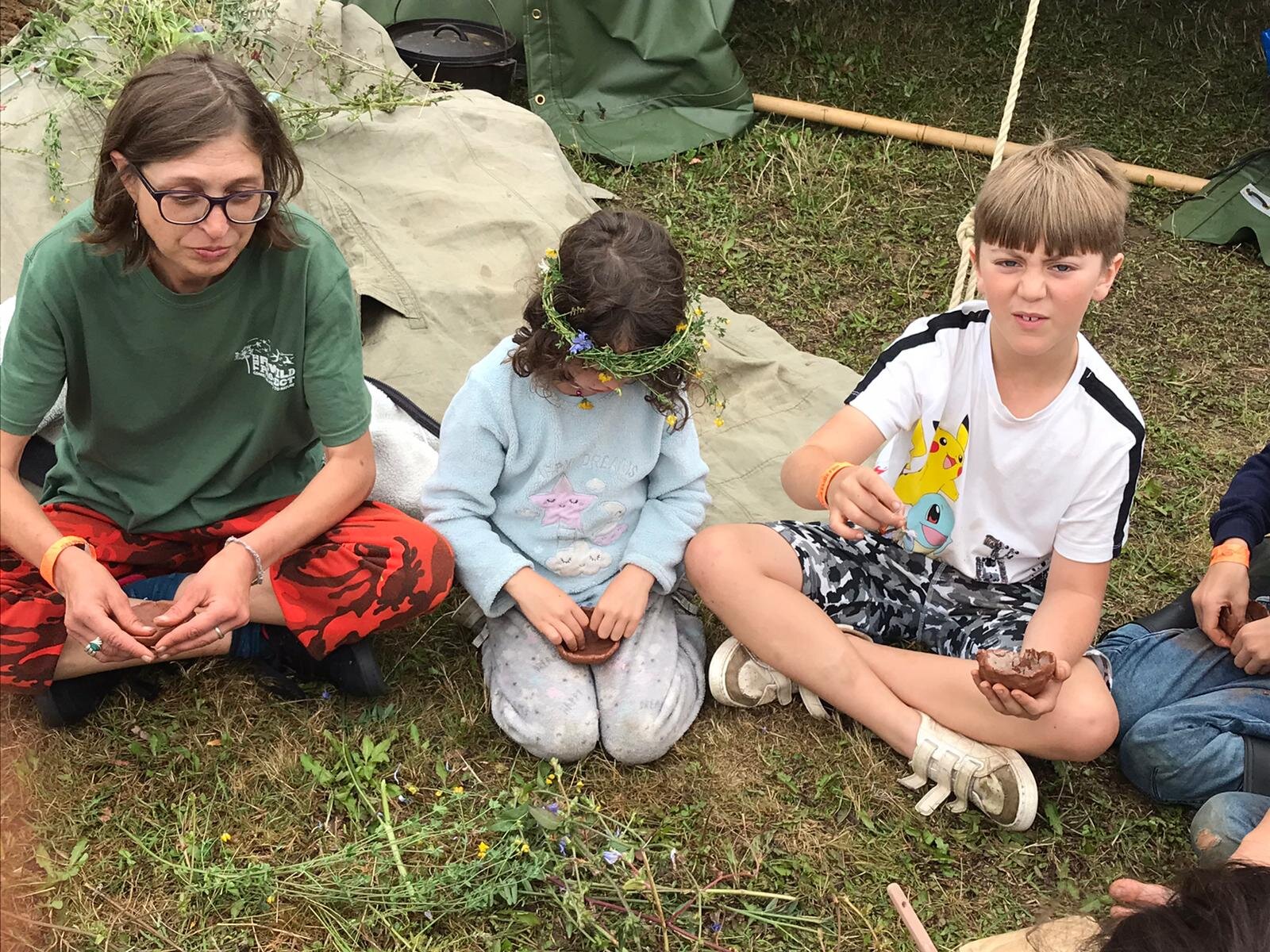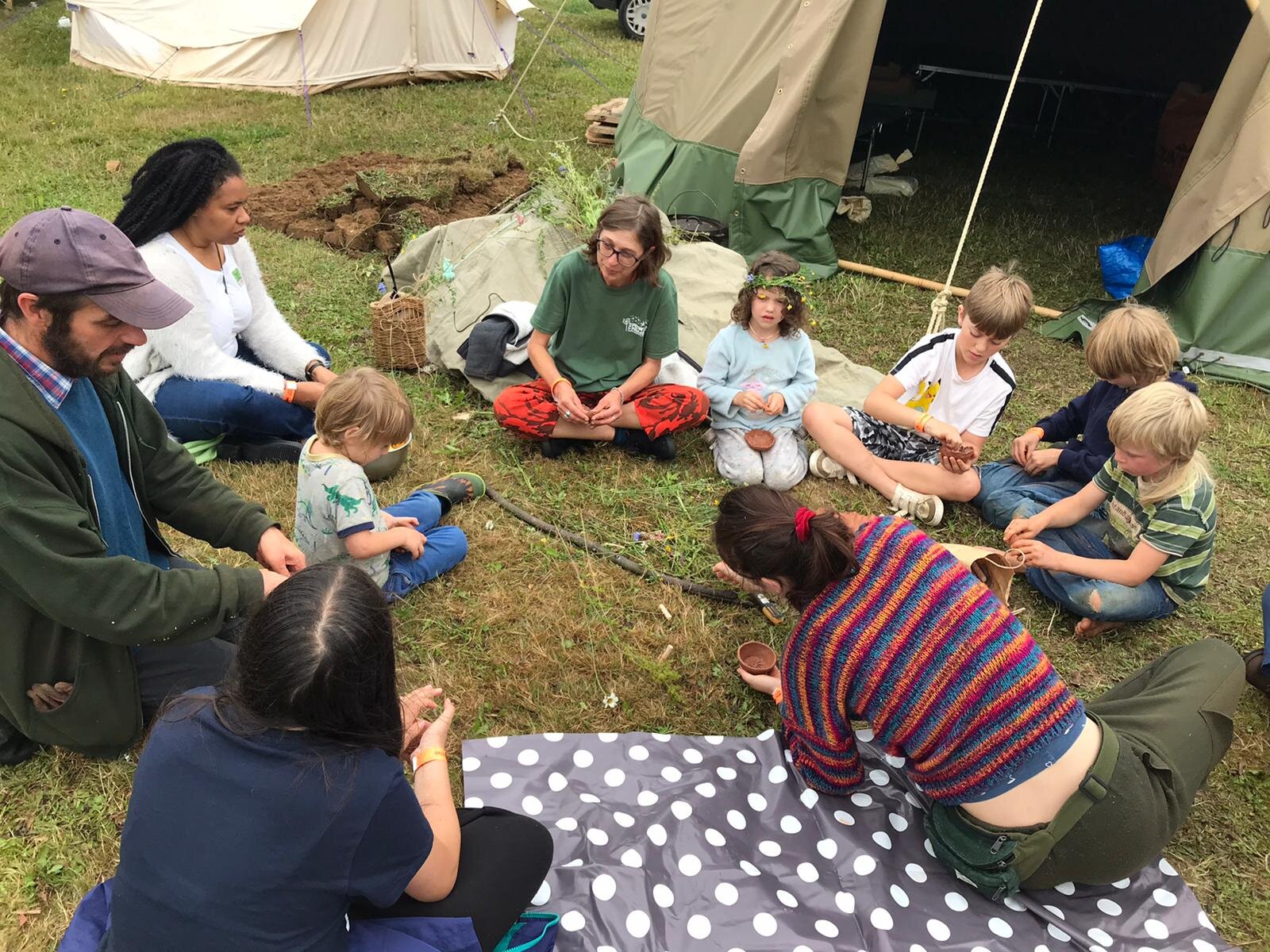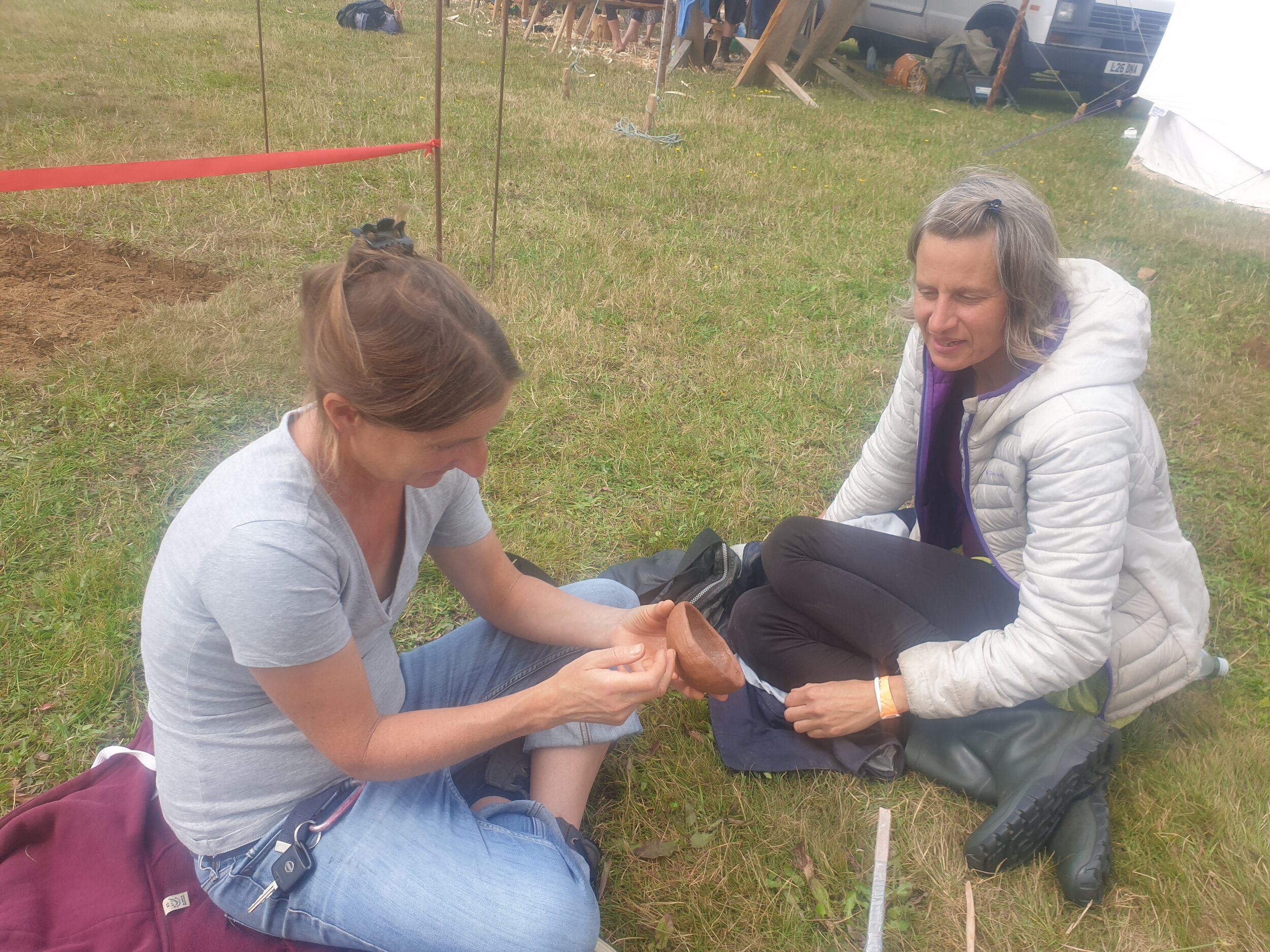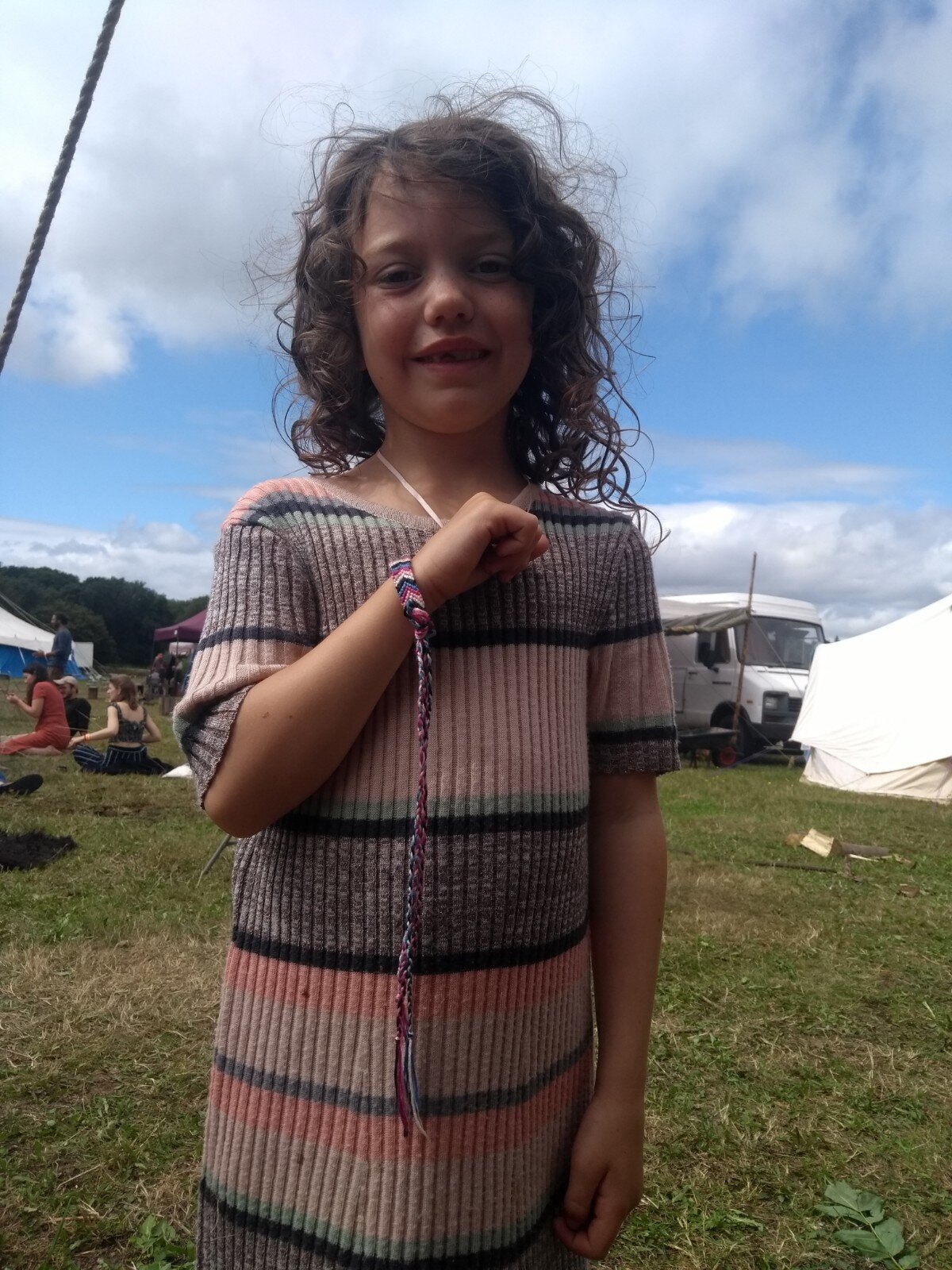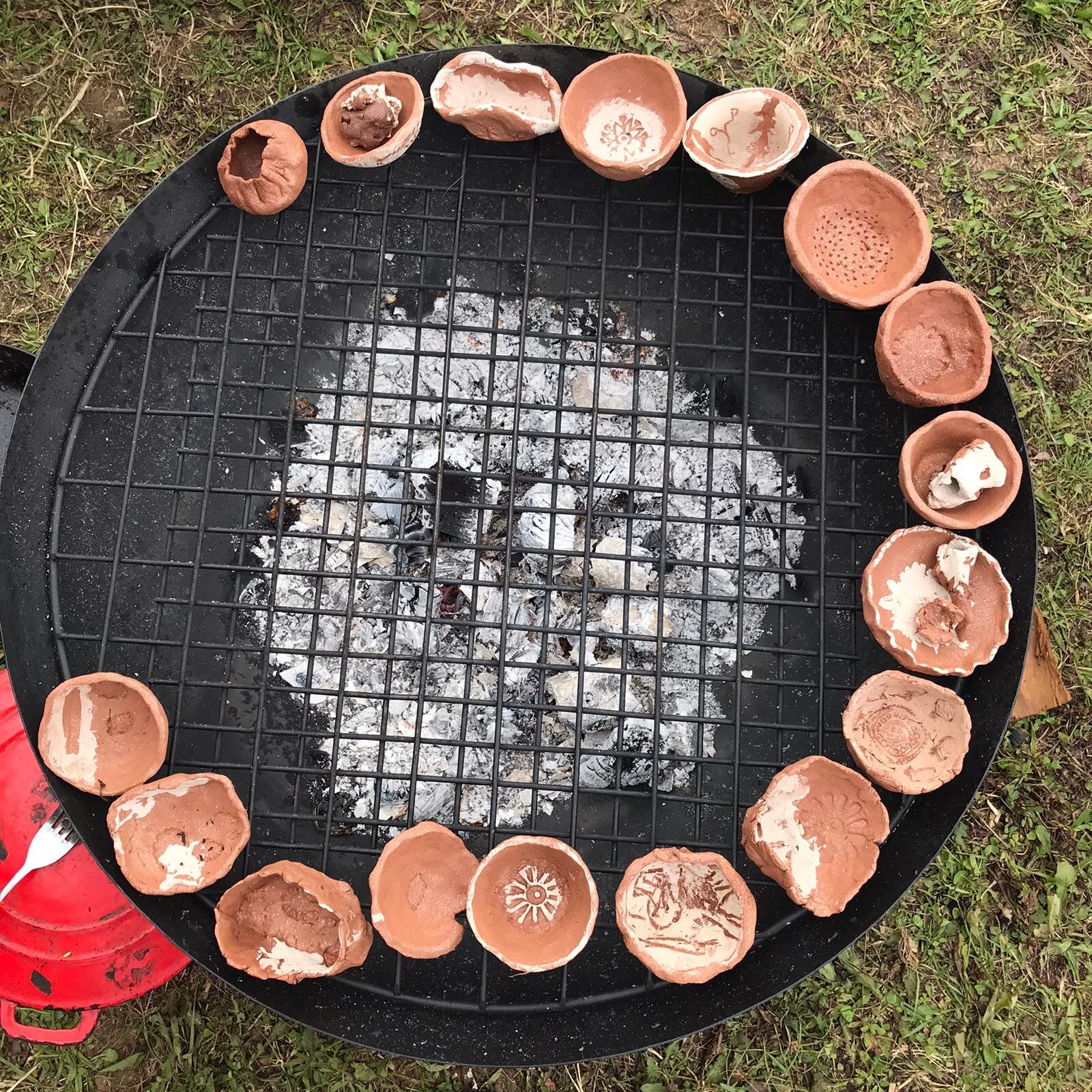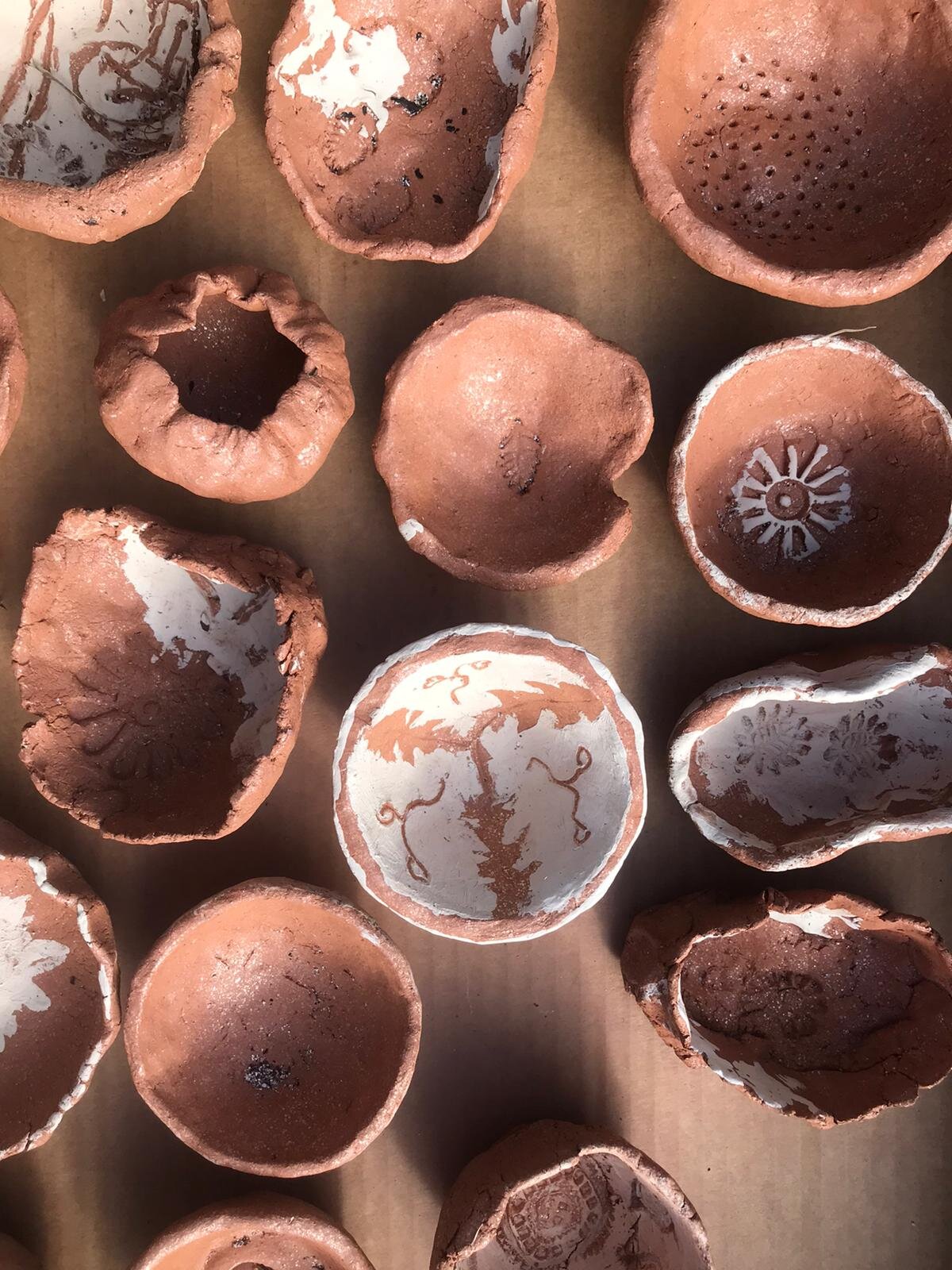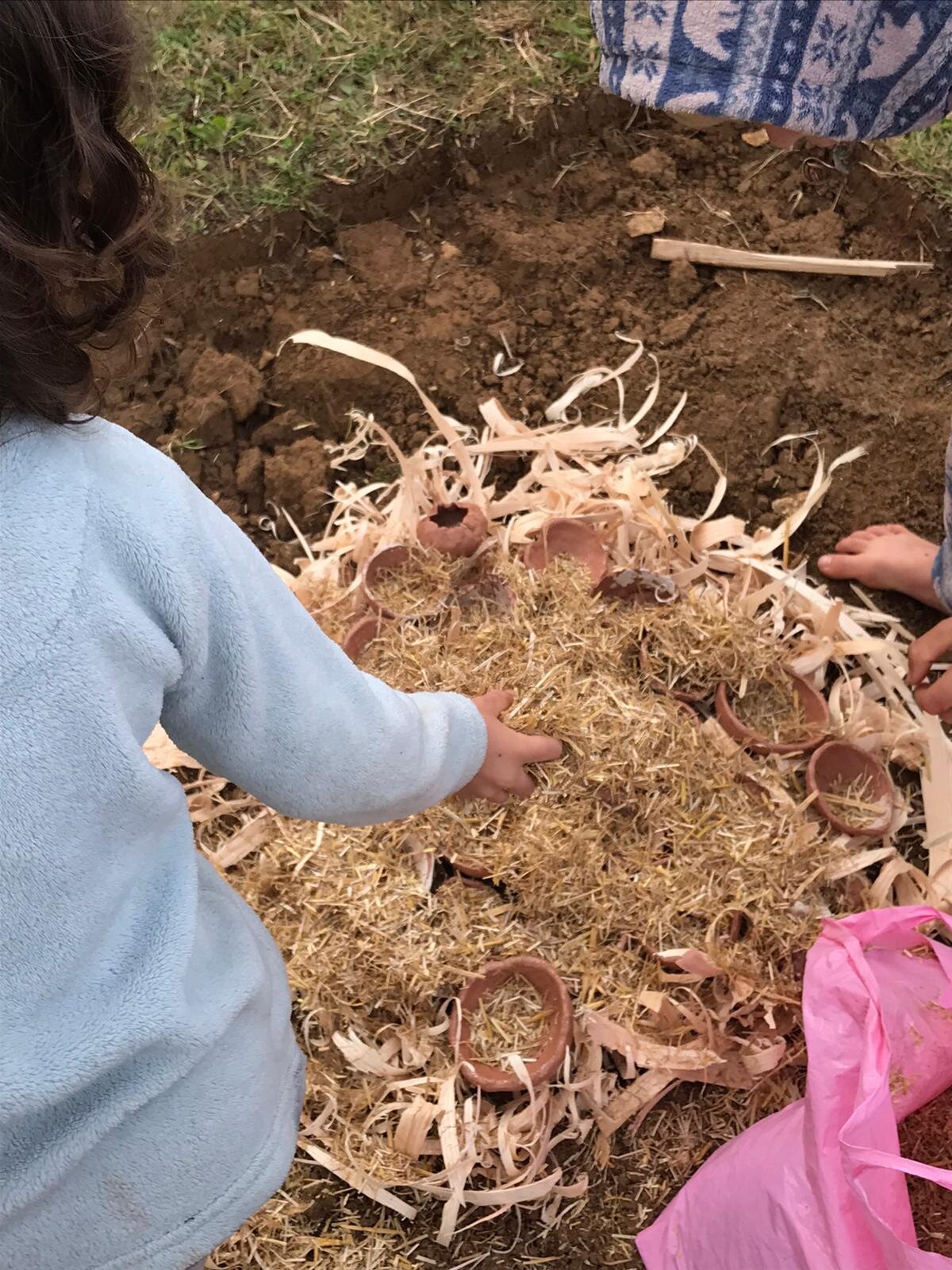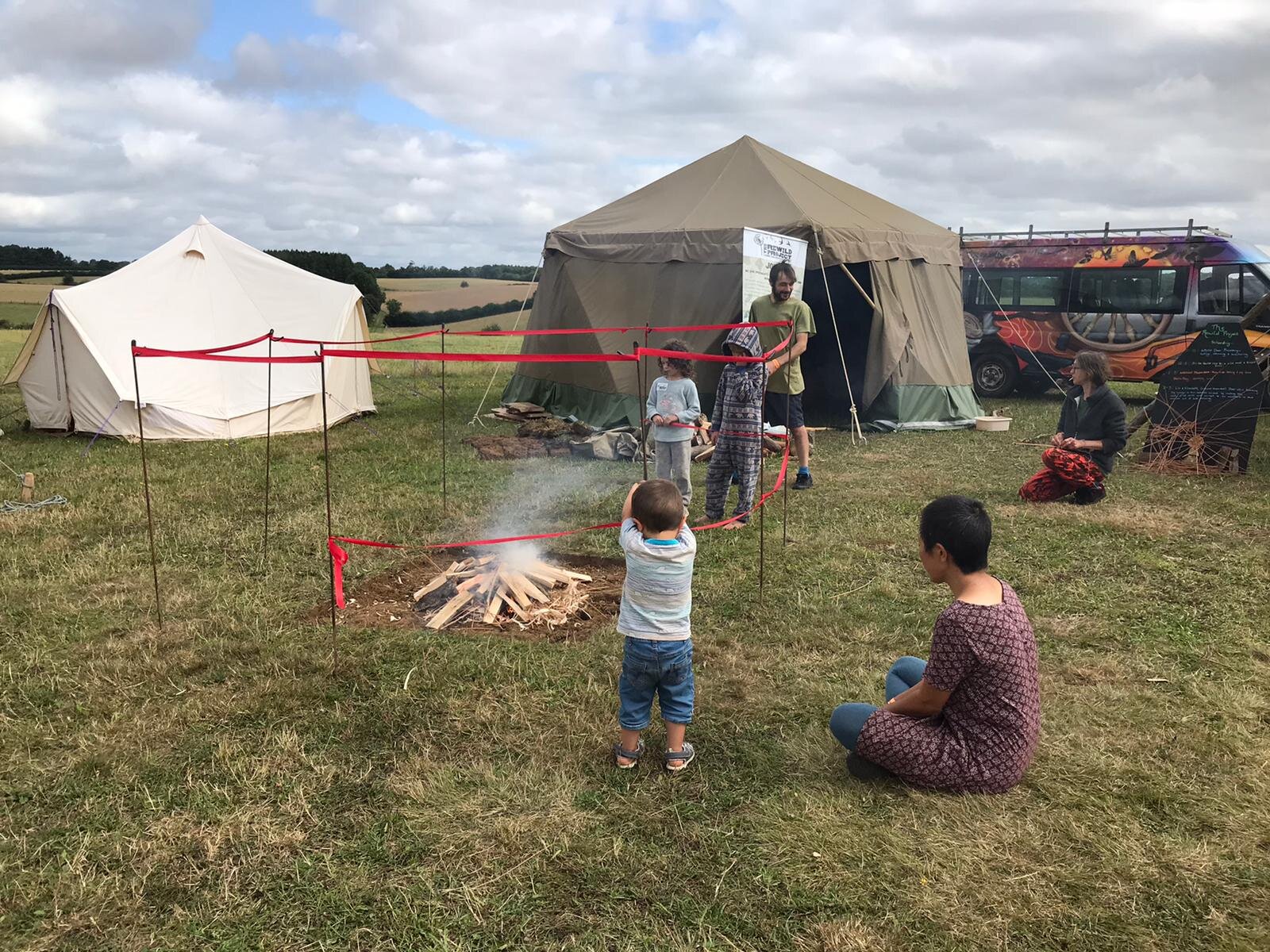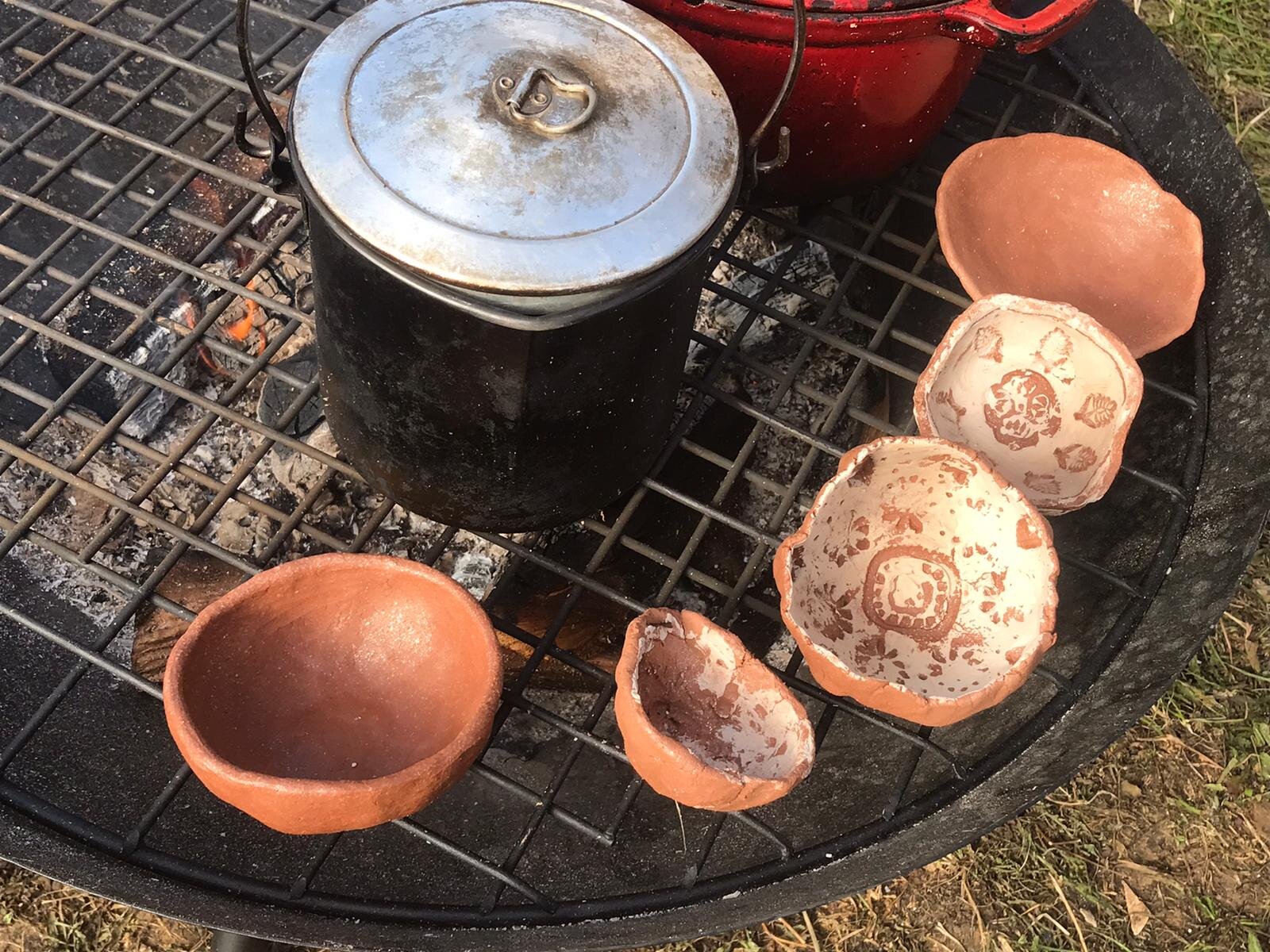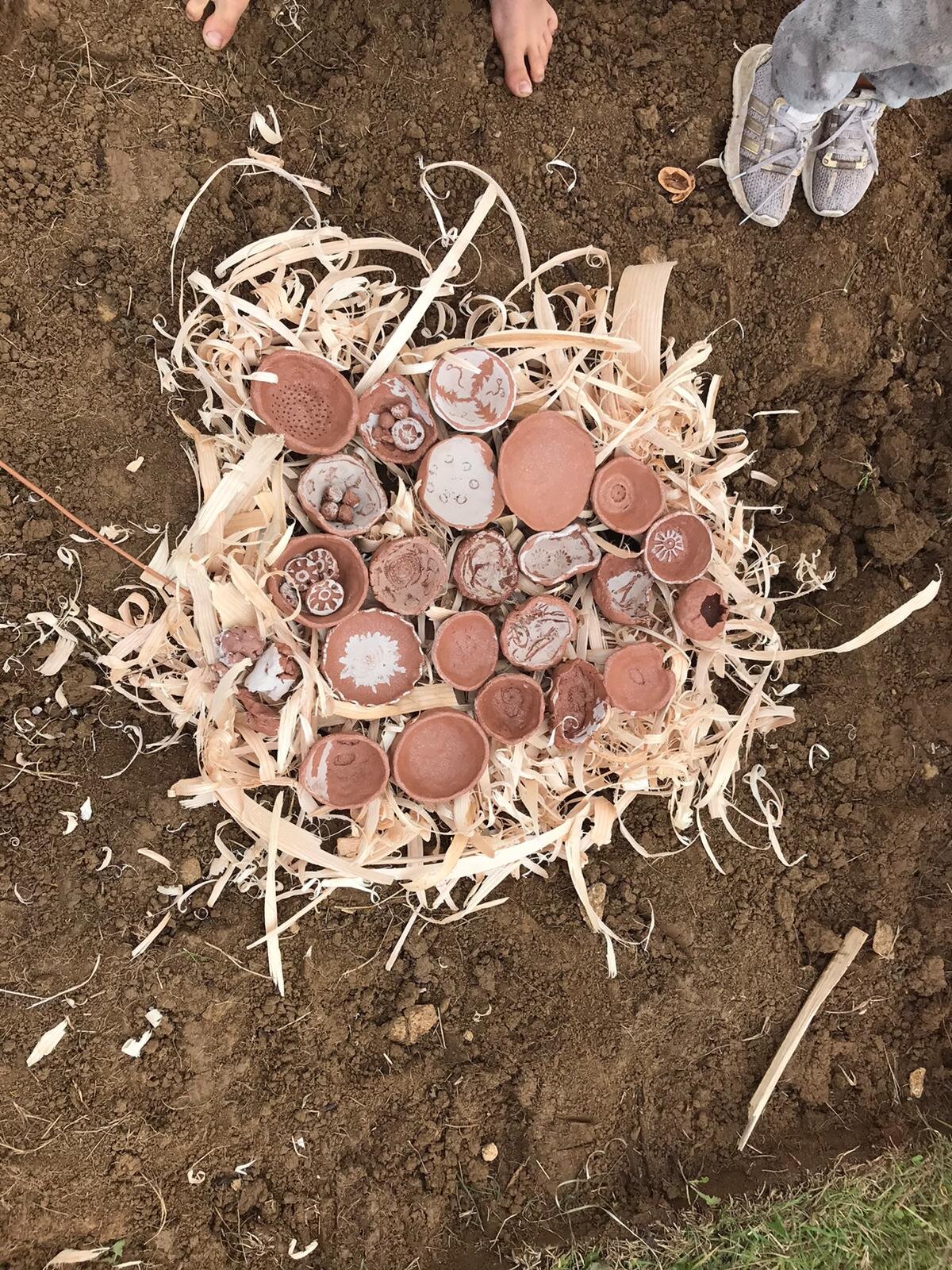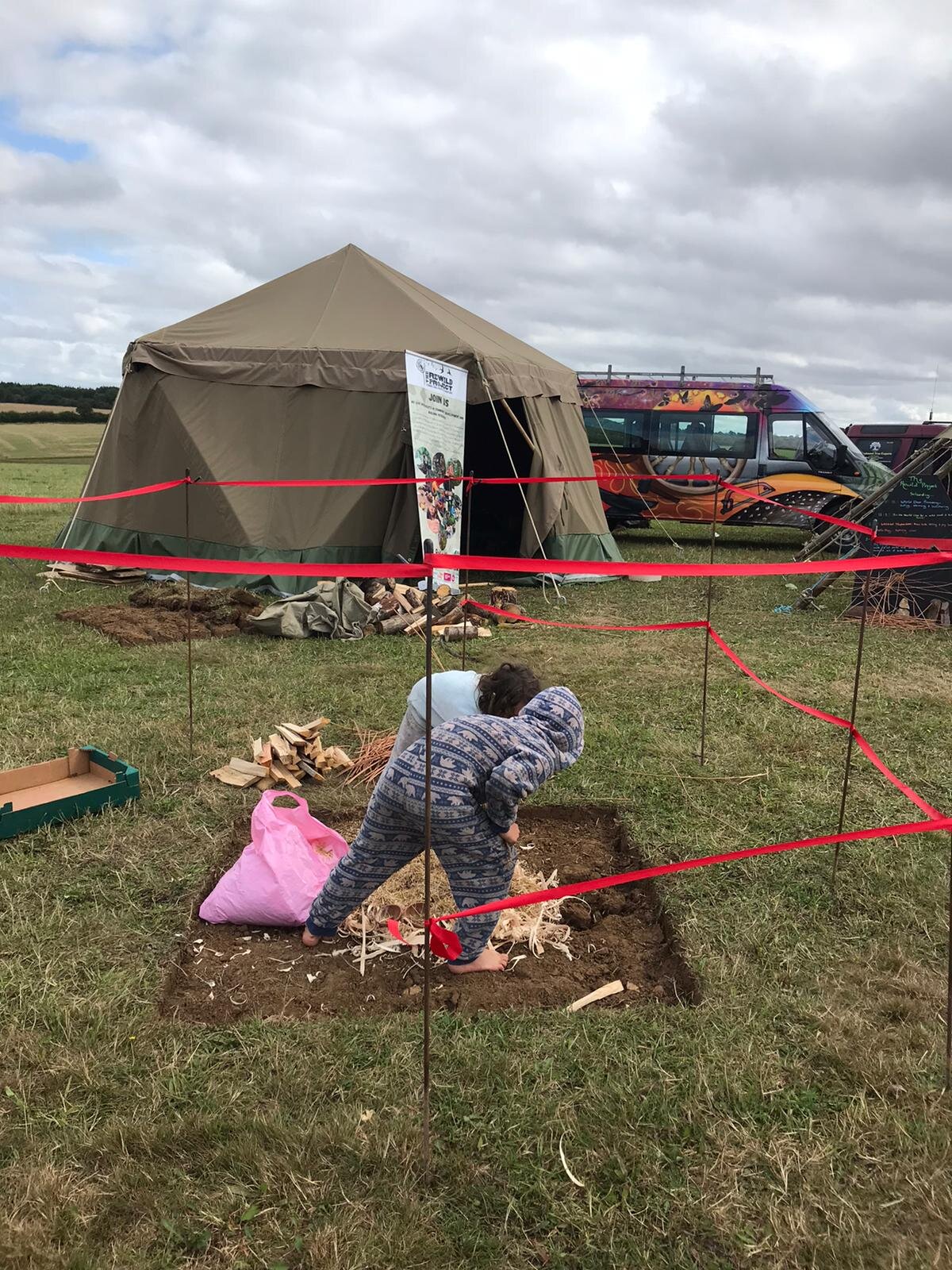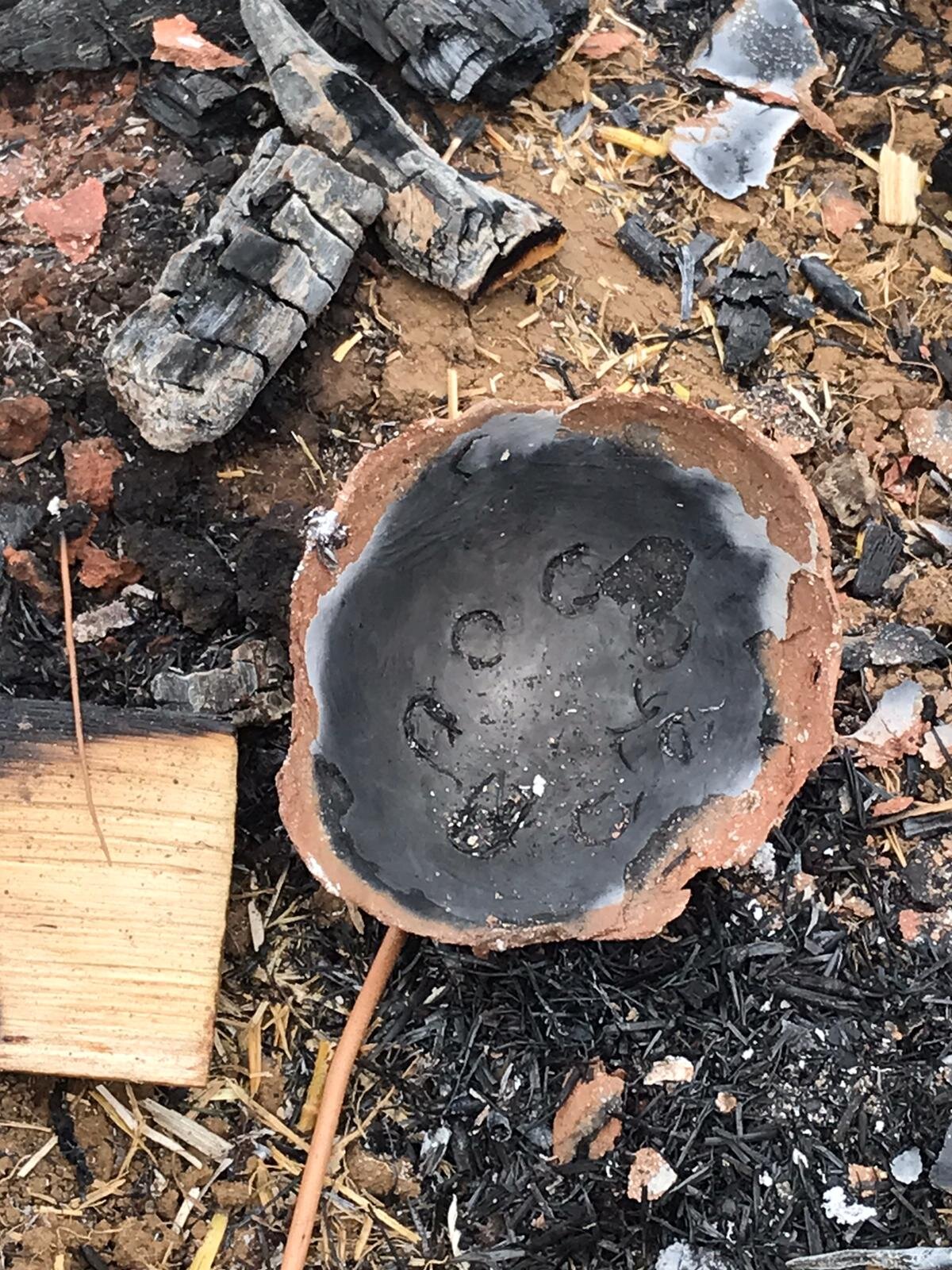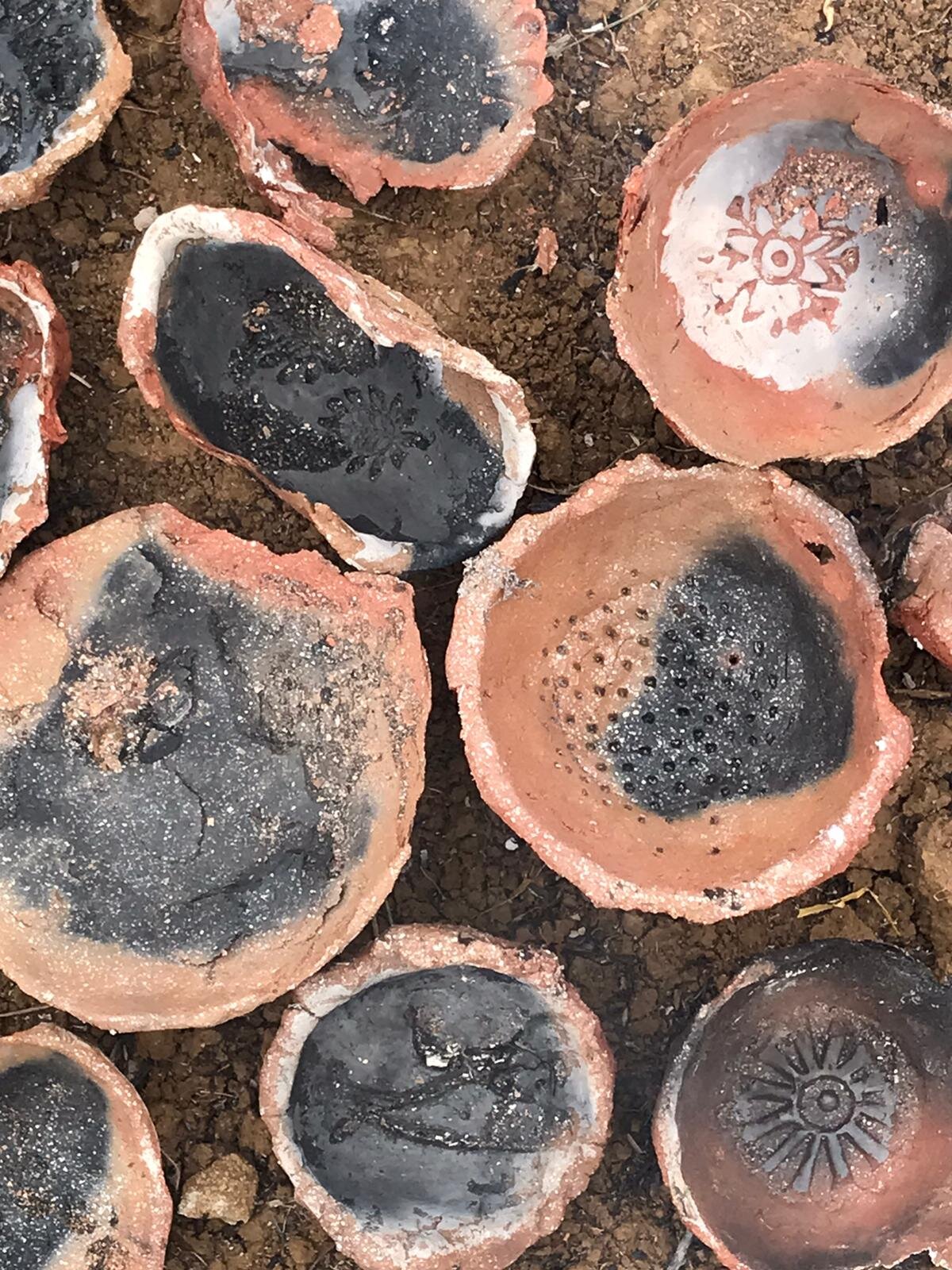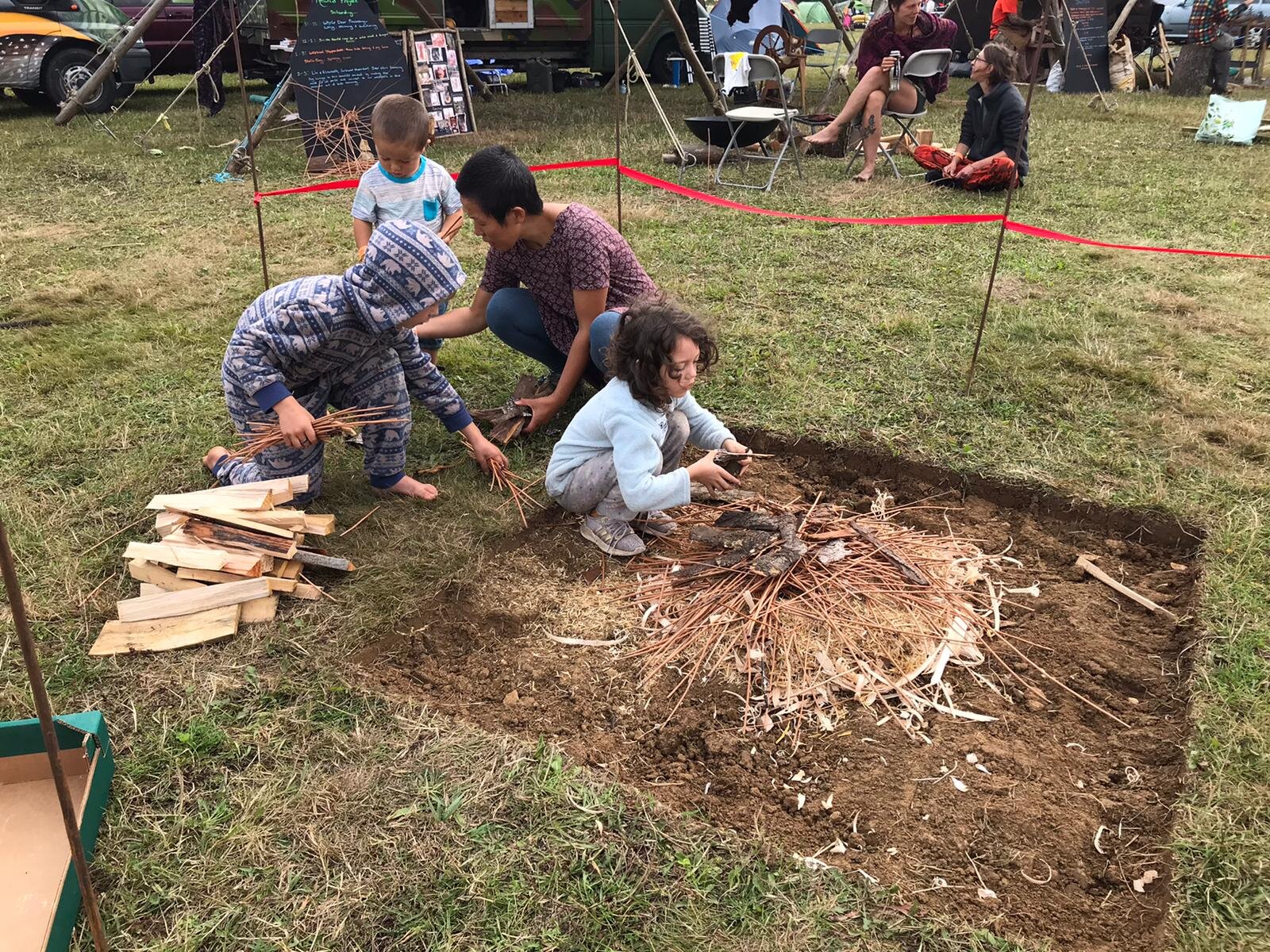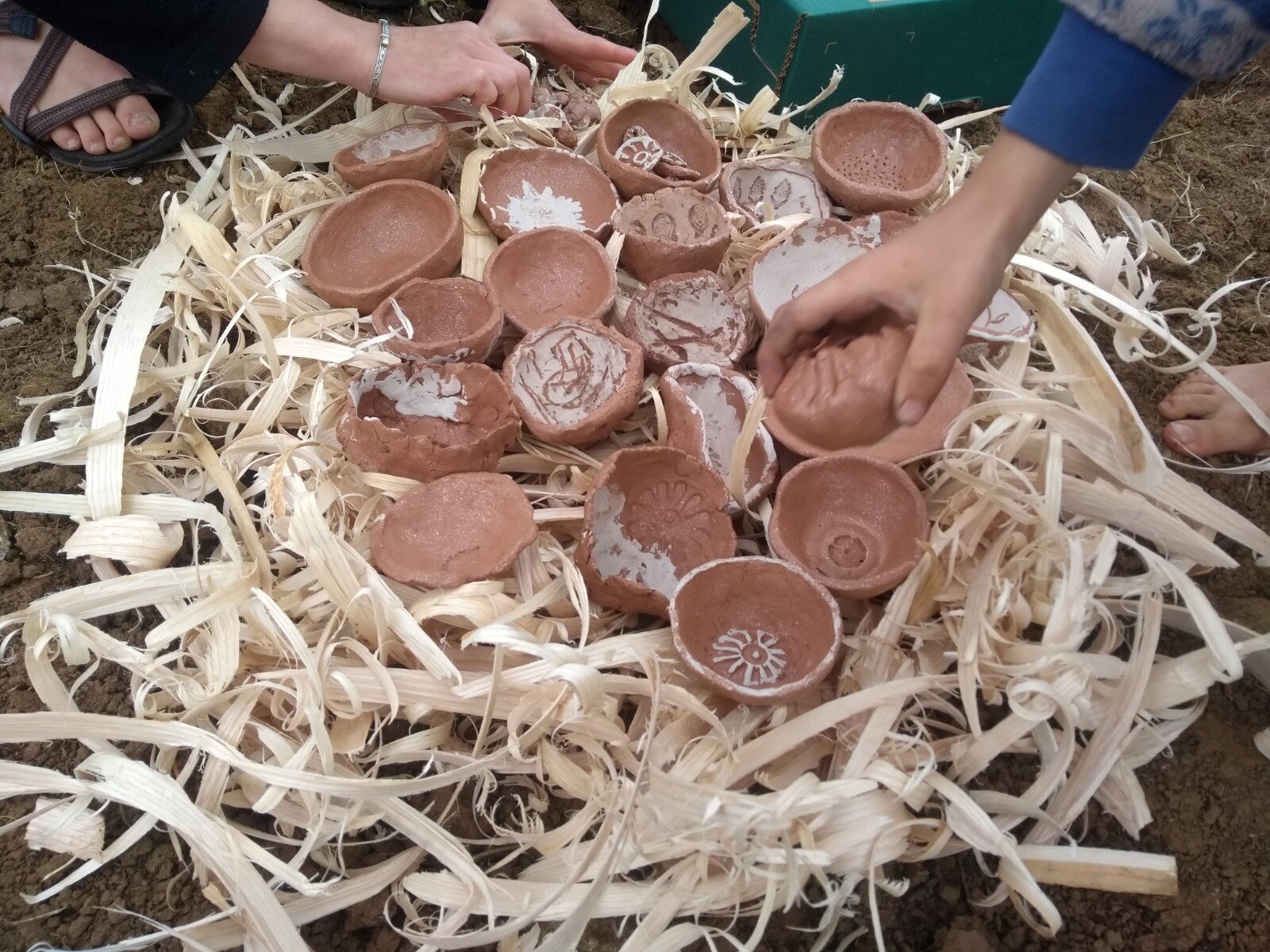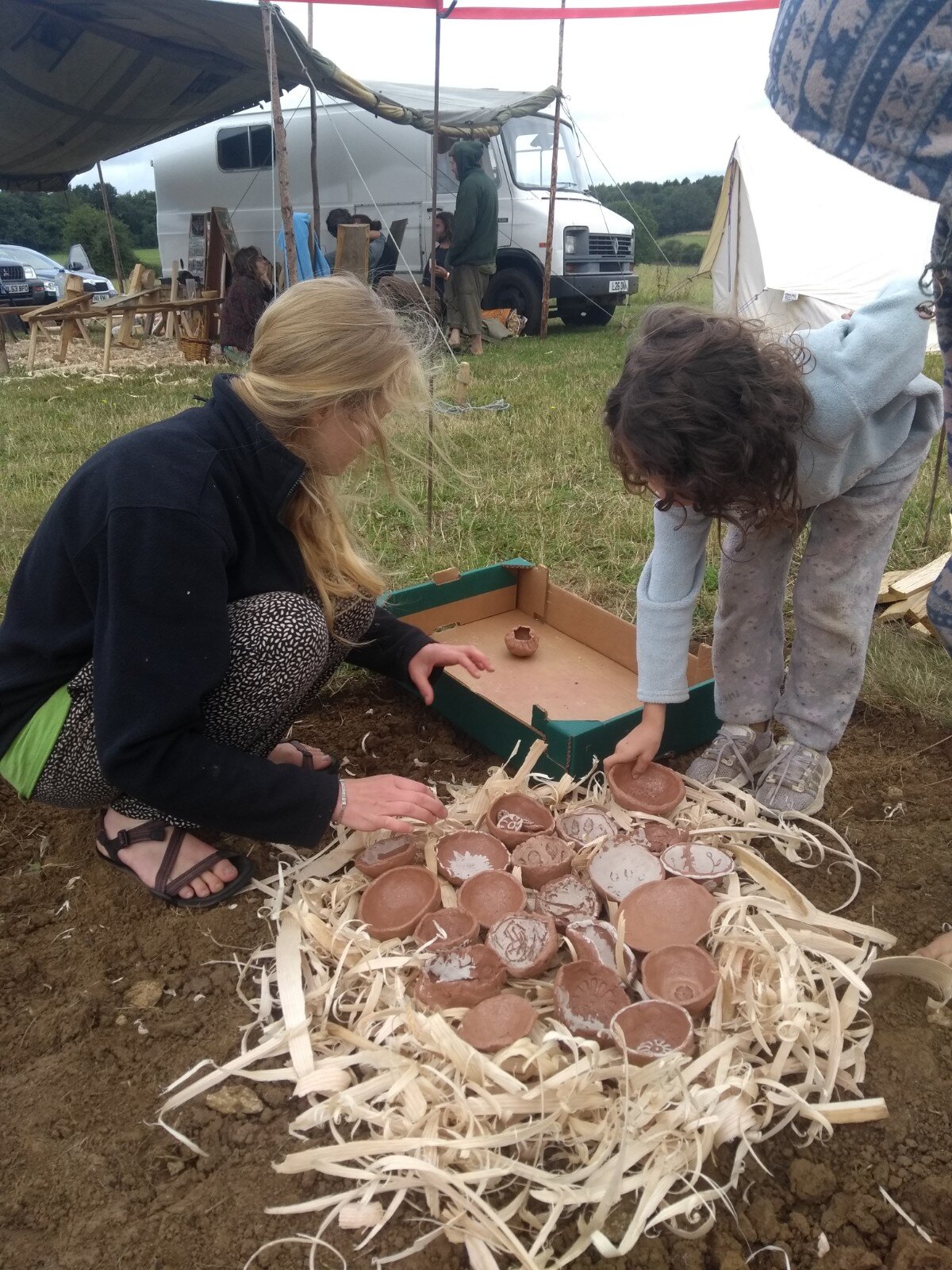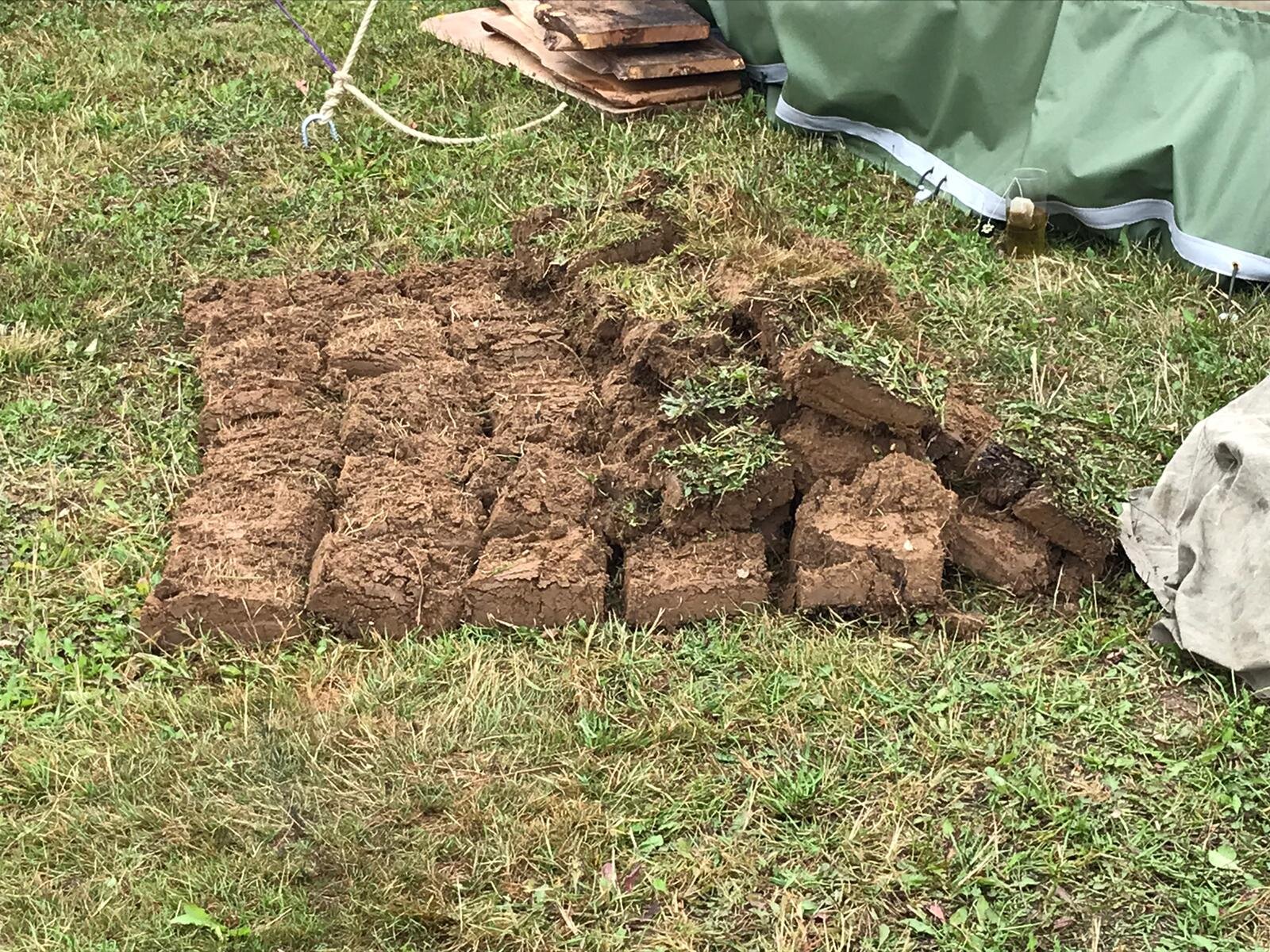Clay Pit Firing at LWA - by Fleen Doran
Clay is a wonderful material - soft, tactile and malleable even in the delicate hands of a child. Armed only with imagination, this ancient material can be miraculously transformed by hand, without the need for tools from a lump of earth into a vessel, a pot, or sculptural form.
Such an expressive and accessible material, and capable of recording intricate details of its maker for hundreds, even thousands of years. Immortality is captured with fingerprints, nail marks and even the subtle sense of touch.
Equally as magical and elemental is its transformation through fire from earth to ceramic.
I was delighted to be invited to the Land Workers Allience Land Skills Festival as a member of The Rewild Project to share my craft. As potter and maker of tableware by trade, the pieces in my range are all high fired in either a wood-fired saltglaze kiln, or in an electric kiln. I was keen however to demonstrate how clay can be fired in an age-old way without any hi-tech equipment. I soon started imagining possibilities for making and sharing the wonders of primitive firing. After all, The Rewild Project’s ethos is about reconnecting people with nature and preserving heritage crafts.
With live folk music in the background we started the first task on the weekend - preparing the ground. When I say ‘we’ I refer to myself and a very keen 7-year-old called Betty, who accompanied me through much of the weekend; keen to be involved in all aspects of the project. As I carefully got to work with the spade, we talked about honouring the soil and the earth and as I cut a jigsaw of turf, we spoke of the ethos of trying to leave no trace. Meanwhile, her task was running, and long-jumping the ever widening gap of the pit When she could no longer span the width, the pit was ready.
Over the weekend I was joined by people of all ages, keen to connect with the beautiful red clay.
Often, I find people need little guidance when making a simple pinch pot. In their hands the cool lump of clay is formed so intuitively into a simple bowl, pinching and turning, pinching and turning, softening as it warms in our hands. It’s profile evening out in thickness, until its weight sits nicely in cupped hands. Small cracks formed on the rim, invited tender smoothing. As fingers refined and burnished the surface, mica sparkled and glistened - a special element within the clay to help it survive the thermal shock of the flame.
Once made, each pot found a place nestled around the cooking fire to dry out. A very important step in ensuring pieces were bone dry before the firing.
On the Sunday morning I was joined by adults weary from nights of merriment and music, and children excited by prospects of fire building and alchemy!
We set to work laying a soft bed of wood shavings and straw in our pit. Next, the dry and brittle pots were carefully placed into their firing position and shrouded in more straw and willow butts (left over from basket making the previous day). Then split wood and logs were stacked with care by small, eager hands. A blessing for the firing, a wish to the kiln gods, the match was struck, and the flames rose. A circle of rosy smiling faces and children circling the area dodging the smoke.
Every now and then just a glimpse of a pot in the red and then white heat.
As the fire grew, we aimed for a temperature of 600-7000C. At 5730C a phenomenon known as the quarts inversionoccurs (quartz is typically referred to as silica by potters). Around this temperature the clay goes through the mysterious and irreversible process of becoming ceramic.
People came and went, the fire burned down, simmering embers turned to ash. The moment of truth had arrived. Carefully with tongs and thick leather gloves, I reached into the ashes and uncovered the pots, transformed by the fire. Sadly and inevitably, not all the pieces survived their treacherous journey through such an extreme firing process. However, there were stories of survival for many of the clay voyagers and with all the ash removed the rich colours of orange, red and black emerged on those pots. Each a small record and story of its position in the firing.
With the turf carefully replaced, the pots were reunited with their eager owners, then on to their new homes.
A big thank you to everyone who was involved.

